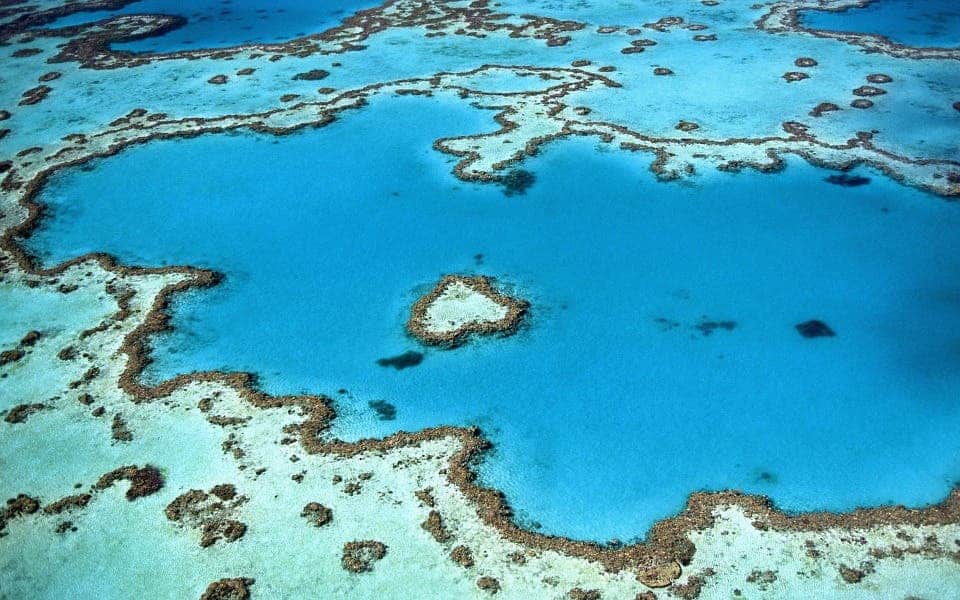Research from The University of Queensland and James Cook University is looking into which genes allow corals to make friends with algae and bacteria.

Corals work together with microscopic organisms, establishing symbiotic relationships that benefit both parties. While we’ve been aware of this for some time now, we didn’t understand the biochemical mechanisms that underpin this collaborative predisposition. A new study is shedding light on the subject.
Coral secrets
“Symbiotic relationships are incredibly important for thriving corals,” says Dr. Steven Robbins, the paper’s lead author. “The most striking example of this is coral bleaching, where corals expel their algal symbiotic partners at higher-than-normal water temperatures.”
Corals partner up with algae and bacteria to make ends meet. The coral fishes raw material out of the water and provides housing, and, in return, the algae keeps everyone well fed and plump. Certain stressors, however — especially sustained, excessive heat — can cause a falling out between the two partners, i.e. bleaching. Judging by how well they work together, such a ‘breakup’ is undeniably bad for both, and we know for a fact that coral reefs suffer extensive damage as a result of bleaching episodes.
Dr. Robbins says that the findings further our understanding of these collaborations, and can aid in conserving or perhaps even healing the world’s coral reefs.
“As algae make up the bulk of the coral’s food through photosynthesis, the coral will die if temperatures don’t cool enough to allow symbiosis to re-establish,” he explains. “It’s possible that equally important interactions are happening between corals and their bacteria and single-cell microorganisms (archaea), but we just don’t know.”
The team worked with Porites lutea coral samples retrieved from a reef near Orpheus Island, north of Townsville, Australia. In the lab, they separated the coral itself from its algal symbiotes and associated microbes — then they did genetic sequencing for all the organisms.
After they had a complete picture of the genetic material involved, they used an algorithm to see which genes each actor in the collaboration could draw from.
“This allows us to answer questions like, ‘What nutrients does the coral need, but not make itself?’,” says Dr. Robbins.
Credit: University of Queensland
Associate Professor David Bourne from JCU and the Australian Institute of Marine Science said having high-quality genomes for a coral and its microbial partners was hugely important.
The study’s findings are important as it is the first overall look at the genetic material of corals, their associated organisms, and of the genes that keep them functioning. Associate Professor David Bourne from James Cook University and the Australian Institute of Marine Science calls the findings “truly ground-breaking”, as, in effect, they represent the “blueprint for coral and their symbiotic communities.”
The team hopes that their findings will be put to good use in safeguarding the world’s coral reefs. These beautiful communities have been created by corals over millions of years, but virtually all have experienced bleaching events in recent years as a consequence of man-made climate warming.
“Our coral reefs support incredible diversity and when we lose reefs, we lose far more than corals. There are many threats to coral, but climate change is the most existential [one] for our reefs,” Dr. Robbins said.
“In 2016 and 2017, nearly 50 percent of all corals on the Great Barrier Reef died, and we don’t see this trajectory reversing if carbon emissions remain at current levels.”
On the one hand, research such as this will enable us to better understand corals and to figure out ways of making them more resilient. On the other hand, however, we shouldn’t rest on our laurels. The most straightforward way to safeguard corals and all other life on Earth is to limit our environmental impact by slashing pollution, emissions, and habitat destruction — even kids know this.
The paper “A genomic view of the reef-building coral Porites lutea and its microbial symbionts” has been published in the journal Nature Microbiology.



